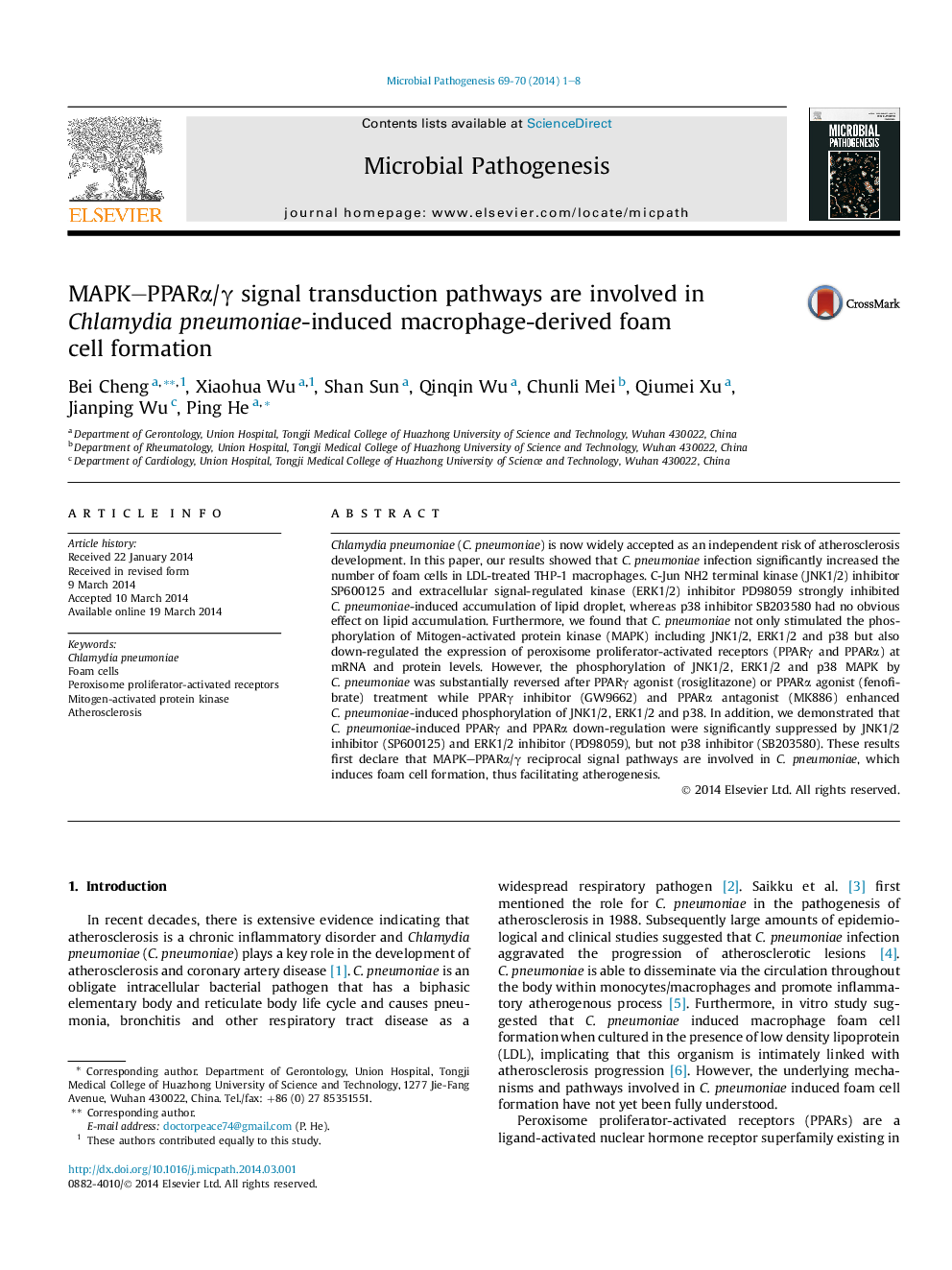| کد مقاله | کد نشریه | سال انتشار | مقاله انگلیسی | نسخه تمام متن |
|---|---|---|---|---|
| 3416600 | 1593717 | 2014 | 8 صفحه PDF | دانلود رایگان |

• Chlamydia pneumoniae infection increased the number of foam cells in LDL-treated THP-1 macrophages.
• C. pneumoniae regulated the phosphorylation of MAPK and the expression of PPARγ/α.
• C. pneumoniae modulated foam cell formation via interfering with MAPK–PPARα/γ crosstalk.
• Our study provided a new insight for the mechanism of atherosclerosis initiated by C. pneumoniae.
Chlamydia pneumoniae (C. pneumoniae) is now widely accepted as an independent risk of atherosclerosis development. In this paper, our results showed that C. pneumoniae infection significantly increased the number of foam cells in LDL-treated THP-1 macrophages. C-Jun NH2 terminal kinase (JNK1/2) inhibitor SP600125 and extracellular signal-regulated kinase (ERK1/2) inhibitor PD98059 strongly inhibited C. pneumoniae-induced accumulation of lipid droplet, whereas p38 inhibitor SB203580 had no obvious effect on lipid accumulation. Furthermore, we found that C. pneumoniae not only stimulated the phosphorylation of Mitogen-activated protein kinase (MAPK) including JNK1/2, ERK1/2 and p38 but also down-regulated the expression of peroxisome proliferator-activated receptors (PPARγ and PPARα) at mRNA and protein levels. However, the phosphorylation of JNK1/2, ERK1/2 and p38 MAPK by C. pneumoniae was substantially reversed after PPARγ agonist (rosiglitazone) or PPARα agonist (fenofibrate) treatment while PPARγ inhibitor (GW9662) and PPARα antagonist (MK886) enhanced C. pneumoniae-induced phosphorylation of JNK1/2, ERK1/2 and p38. In addition, we demonstrated that C. pneumoniae-induced PPARγ and PPARα down-regulation were significantly suppressed by JNK1/2 inhibitor (SP600125) and ERK1/2 inhibitor (PD98059), but not p38 inhibitor (SB203580). These results first declare that MAPK–PPARα/γ reciprocal signal pathways are involved in C. pneumoniae, which induces foam cell formation, thus facilitating atherogenesis.
Journal: Microbial Pathogenesis - Volumes 69–70, April–May 2014, Pages 1–8